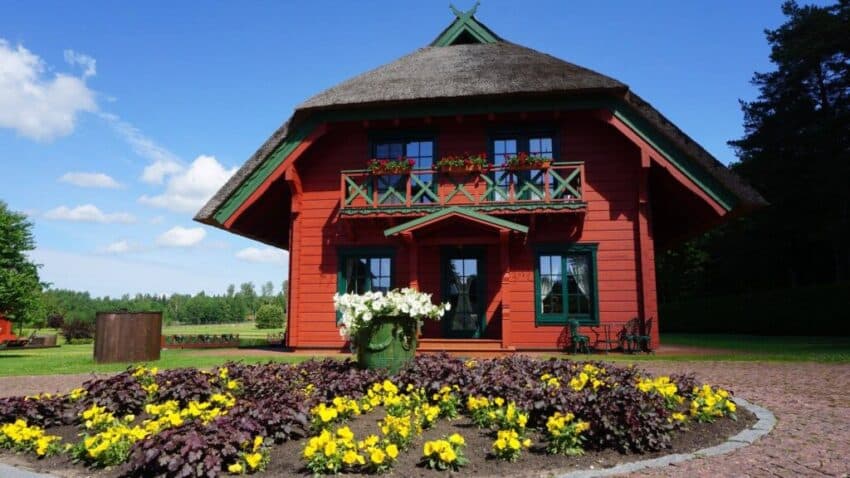Log houses can be environmentally sustainable in addition to radiating a pleasant sense of earthiness with their looks.
While the average home spends roughly $2,000 on energy each year, most log cabin owners report spending less on hot water, air conditioning, lighting, and heating. Many of these homeowners are taking advantage of the log cabin’s green-friendly features, both pre-existing and modifiable.
Log cabins may be ecologically beneficial for a variety of reasons, including energy conservation, construction materials, and insulation. We discuss them in detail below-
Conservation and Energy Efficiency
Log cabins and energy conservation go hand in hand since the vast bulk of logs helps to conserve energy. The material is especially well-suited to residential environments. Logs absorb heat during the day and emit it at night, balancing the temperature and creating a comfortable living space. Many sources of timber construction now employ environmentally friendly technical approaches to prevent air penetration.
In many cases, the architecture of a log cabin allows for excellent efficiency in terms of heating and air conditioning, as well as being constructed expressly for energy savings and safety. Several log cabins are members of the Log and Timber Homes Council, which assures that makers of log cabin equipment heating systems and other roofing materials are secure and transparent. As a result, an increasing number of log cabins are being built with double-paned windows, enhanced ventilation, and sub-flooring to increase overall quality and safety.
Apart from making the homes environmentally friendly, several log cabins manufacturers and suppliers are ensuring that the wood collecting process is as environmentally friendly as possible. This may aid with soil erosion and compaction, as well as planting, nurturing, and maintaining young trees.
Useful Thermal Mass
Thermal mass in log cabins serves to limit the amount of area that an air conditioning unit has to cover, allowing for cross ventilation and optimum shading. With their day-night activities, logs operate as thermal batteries, providing comfort and reducing the need for air cooling or heating for many households.
Closeness to Sunlight
Due to the lack of other nearby structures, log cabins are frequently positioned in direct sunlight. With this in mind, making the most of it is extremely ecologically good, especially as solar energy gets more affordable via incentives and government initiatives. Solar panels are now very adaptable to log cabins, resulting in energy bill reductions and environmental benefits.
Environmentally Conscientious Homeowners
A big draw of a log cabin is how well-integrated it appears into the natural landscape, therefore it tends to attract individuals who care about the environment. It’s usually designed to blend in with nature rather than stick out like traditional dwellings. With this in mind, it’s no wonder that log cabin owners want to develop and maintain their homes using environmentally friendly methods such as:
- Using mortar rather than synthetic chinking made from petrochemicals
- Constructing the log cabin using deadwood rather than living trees. This is another option for environmentally conscious log homeowners or potential owners.
- The architecture of the dwelling takes full advantage of the log cabin’s intrinsic energy efficiency similar to a thermal battery.
Log cabin manufacturers like Eurodita employ ideas like these to maximize their log home’s natural ecologically friendly qualities, as well as the relatively modest alterations – such as choosing a different material – that may go a long way in saving the environment without losing quality.


